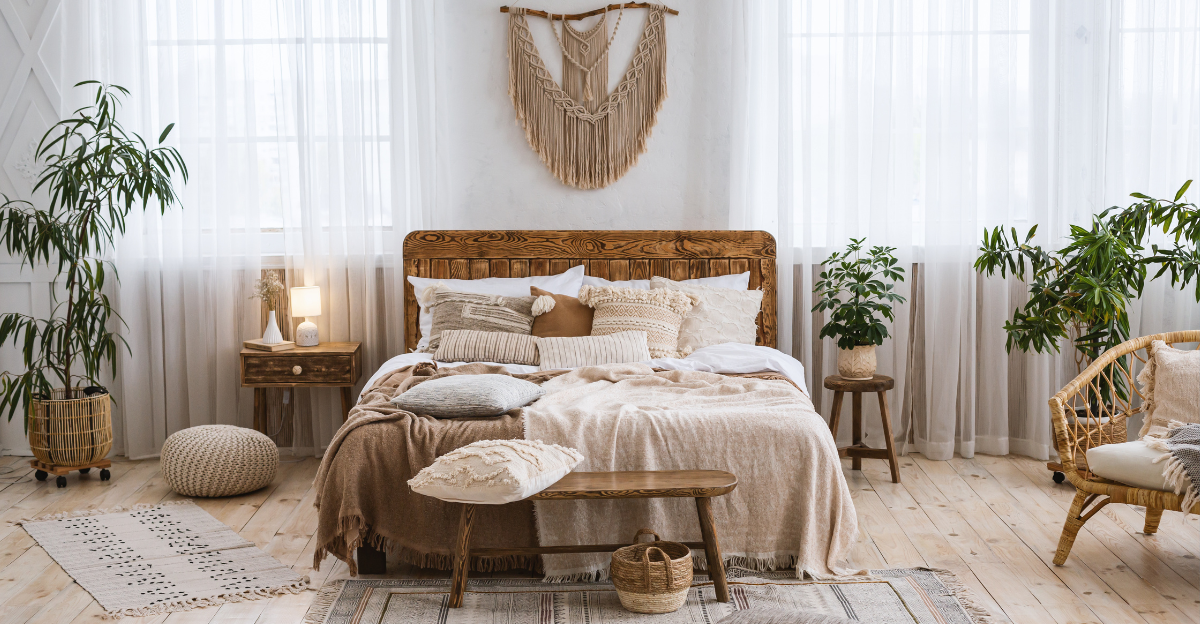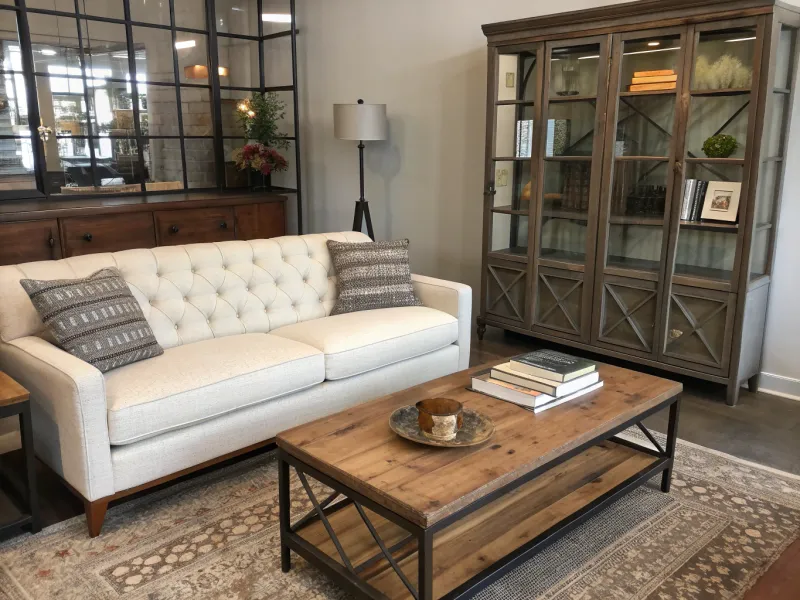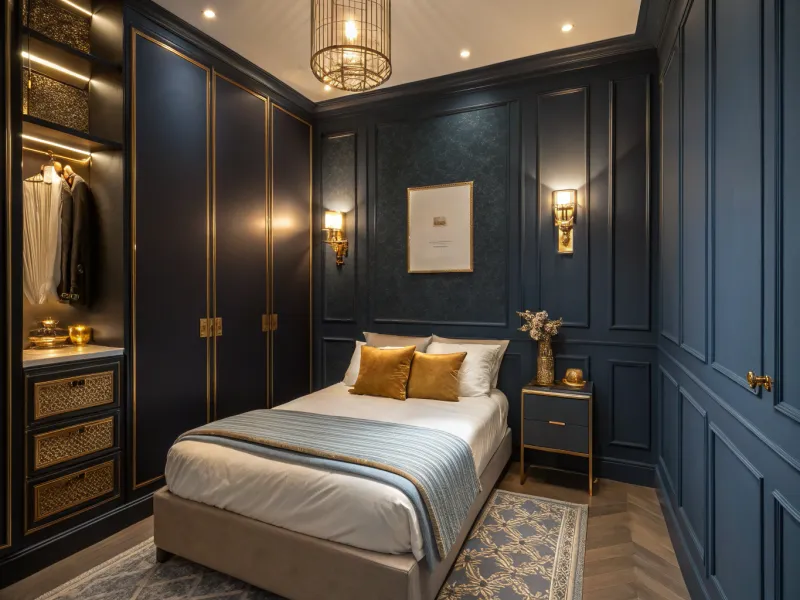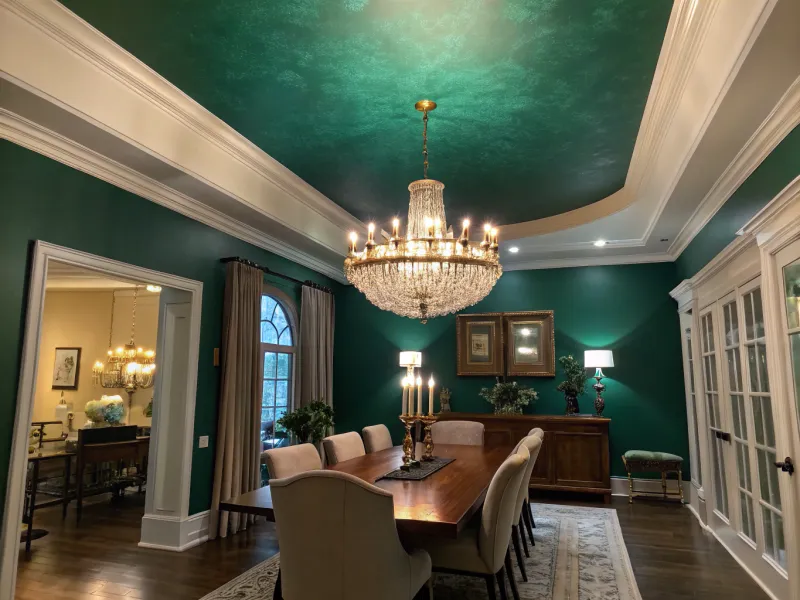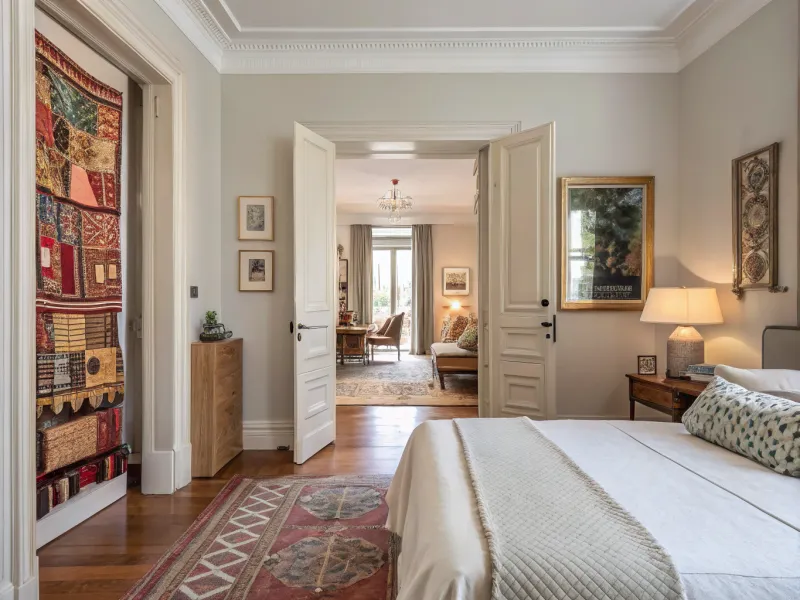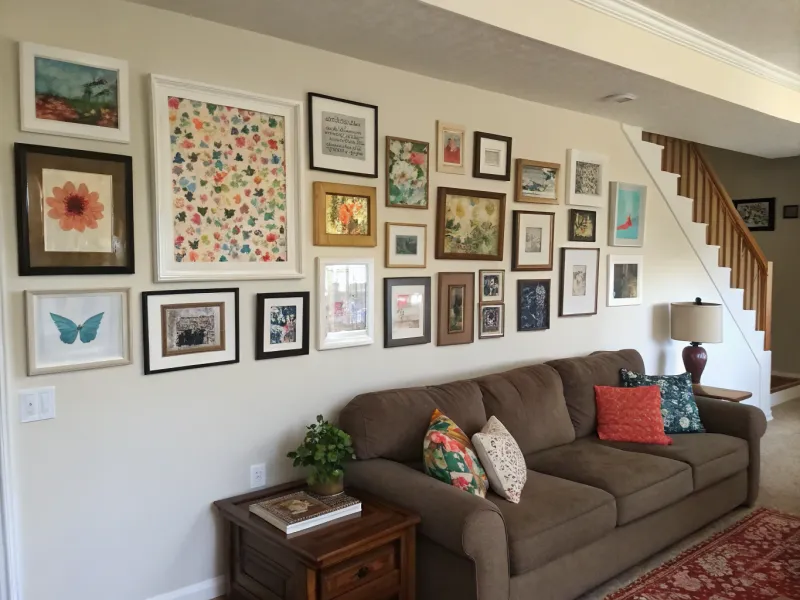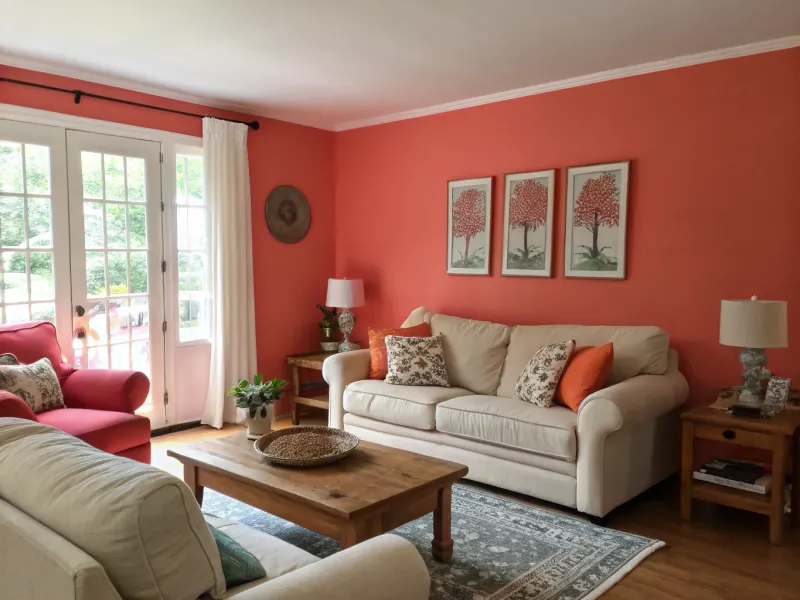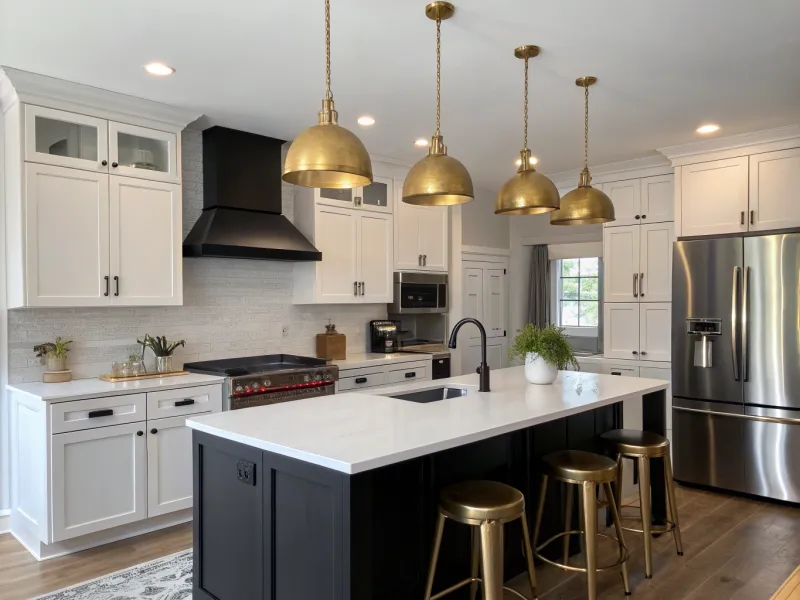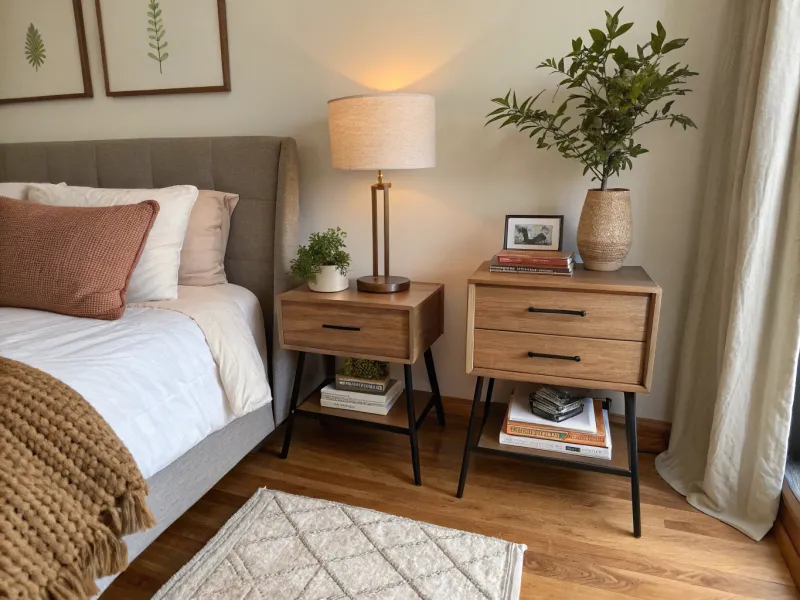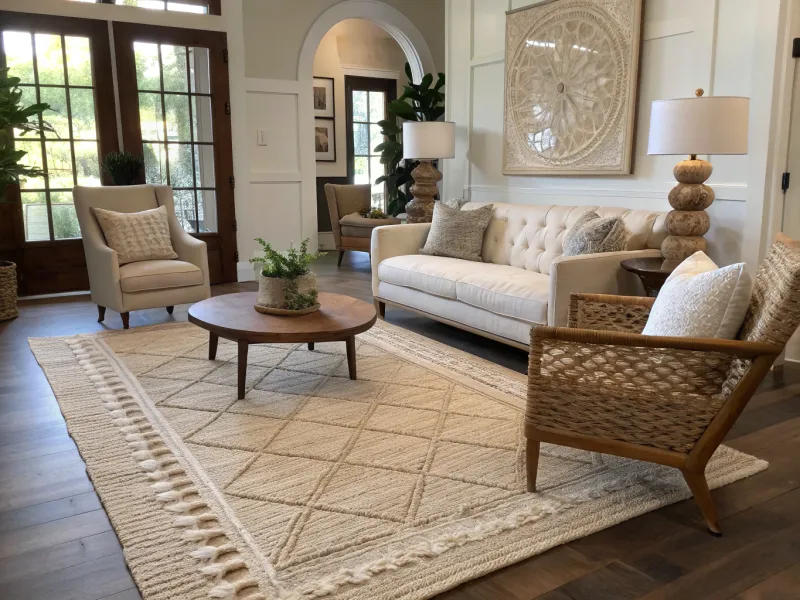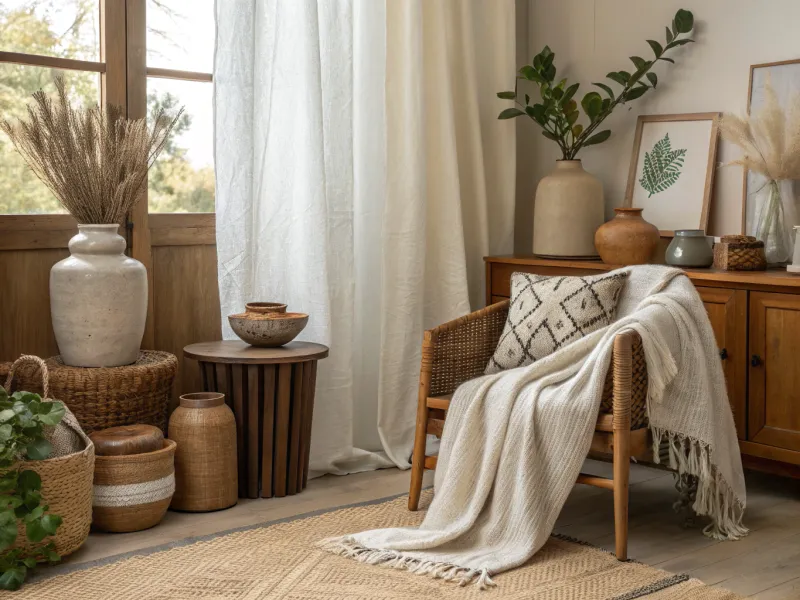Decorating rules have guided homeowners for decades, but sometimes breaking them leads to the most stunning spaces. Think of these guidelines as starting points rather than strict laws. When you understand why certain rules exist, you gain the confidence to bend them creatively for spaces that feel uniquely yours rather than cookie-cutter copies from design magazines.
1. Mix Up Your Furniture Styles
Forget matching furniture sets! Combining different styles creates rooms with personality and depth. A mid-century modern sofa can look amazing next to a traditional coffee table or an industrial bookshelf.
This approach tells your personal story through carefully chosen pieces that speak to you. Each item brings its own history and character to the space, making conversations more interesting when guests visit.
The secret is finding a common element—maybe similar wood tones, complementary colors, or consistent scale—to tie everything together. When done thoughtfully, these eclectic combinations feel collected over time rather than purchased all at once.
2. Embrace Dark Colors in Small Spaces
Bold, dark colors can transform tiny rooms from forgettable to fabulous. Navy, charcoal, or even black walls create depth that makes the space feel larger and more luxurious, not smaller as conventional wisdom suggests.
Deep hues absorb light rather than reflect it, blurring the boundaries of walls and making corners recede visually. This optical illusion adds a sense of mystery and sophistication that pale colors simply cannot achieve.
Try this in powder rooms, small offices, or cozy bedrooms. Add metallic accents and proper lighting to prevent the space from feeling cave-like, and watch as your formerly cramped room becomes everyone’s favorite spot in the house.
3. Color Your Ceiling
Ceilings deserve better than boring white! This often-ignored ‘fifth wall’ offers a canvas for creativity that can dramatically transform your space. Painting it a soft blue creates the feeling of open sky, while a rich, dark color can make high ceilings feel cozier.
Wallpaper works wonderfully overhead too. Subtle patterns add interest without overwhelming, while bold designs make unforgettable statements. In dining rooms, metallic finishes reflect candlelight beautifully for magical dinner parties.
Remember that ceiling color affects how light moves through your space. Warmer tones create intimate, glowing environments, while cooler shades feel airy and expansive. This simple change might be the most impactful design decision you make!
4. Design Room by Room
Homes tell better stories when each room has its own personality! While flow matters, identical styling throughout creates boring, hotel-like spaces. Instead, let each room reflect its purpose and your changing tastes.
Your serene bedroom might feature soft neutrals and minimal décor, while your living room explodes with colorful art and pattern. Your home office could embrace industrial elements that would feel out of place in your romantic dining space.
The key is subtle connection—perhaps a color that appears in varying amounts throughout, or similar wood tones that create gentle consistency. This approach creates delightful surprises as people move through your home, discovering new facets of your style in each room.
5. Hang Art at Any Height
Art displayed at unexpected heights creates visual excitement! While the standard “eye-level” rule works for galleries, your home deserves more creative approaches. Try hanging pieces low behind sofas to create intimate conversation areas, or place them near the ceiling to draw eyes upward.
Leaning larger works against walls rather than hanging them adds a casual, collected feel. This approach works beautifully on mantels, shelves, or even directly on the floor for an artistic statement that breaks all conventions.
Group smaller pieces in asymmetrical arrangements that grow organically across your wall. This creates energy that symmetrical grids simply can’t match. Remember, your home isn’t a museum—playful, unexpected art placement makes spaces feel truly lived-in and personal.
6. Paint Walls Bold Colors
Neutral walls might be safe, but they rarely inspire! Vibrant colors transform ordinary rooms into extraordinary experiences. A rich emerald green creates natural luxury, while sunny yellow brings perpetual warmth to north-facing spaces.
Worried about commitment? Start with just one statement wall in a bold hue. This creates a focal point while letting you test your color courage. Even rental-friendly temporary wallpaper can satisfy your craving for pattern and color without permanent changes.
Color psychology matters too—blues promote calm, reds energize, and purples encourage creativity. Choose shades that support each room’s purpose rather than limiting yourself to beige throughout. Your personality deserves walls that reflect it!
7. Mix Metal Finishes Freely
The days of matching every metal finish are over! Combining brass light fixtures, stainless appliances, and matte black hardware creates spaces with depth and character. These mixed metals mimic how we naturally layer jewelry—think gold necklace with silver rings.
The secret is intentionality. Choose a dominant metal for about 60% of your fixtures, then add one or two complementary finishes for the remaining pieces. This creates harmony without boring predictability.
Consider temperature too—warm metals like brass and copper pair beautifully with cool ones like chrome when balanced thoughtfully. This approach feels collected over time rather than purchased as a matched set, adding authentic personality to kitchens, bathrooms, and living spaces.
8. Embrace Asymmetrical Arrangements
Perfect symmetry often feels stiff and formal. Asymmetrical arrangements create dynamic, lived-in spaces that feel naturally balanced without mirror-image perfection. Try placing different nightstands on either side of your bed, or arranging furniture in conversational groupings rather than rigid pairs.
Nature rarely creates perfect symmetry, which explains why asymmetry feels so comfortable and organic in our homes. The key is visual weight—a larger item on one side can balance several smaller pieces on the other.
This approach invites creativity and personal expression that symmetrical rooms simply can’t achieve. It also makes decorating easier since you’re free from finding identical pieces! Embrace the Japanese concept of wabi-sabi—finding beauty in imperfection—for spaces that feel authentically yours.
9. Place Rugs Partially Under Furniture
Forget the rule that rugs must completely contain all furniture! Placing just the front legs of sofas and chairs on a rug creates a cohesive seating area while requiring a smaller, more affordable carpet. This approach works especially well in open floor plans where you need to define separate zones.
Small vintage rugs can shine as accents rather than room-fillers. Try layering them over larger natural fiber rugs for texture and interest that full-room carpeting never achieves. This creates depth while showcasing special pieces.
In bedrooms, try placing runners on either side of the bed rather than one large rug underneath. This approach highlights beautiful flooring while still providing soft landing spots for bare feet in the morning.
10. Create Rooms Without Focal Points
Not every room needs one attention-grabbing feature! Sometimes the magic happens in the overall feeling rather than a single standout element. Spaces designed around conversation, comfort, and flow often feel more welcoming than those dominated by statement pieces.
Try creating rooms where texture becomes the star—plush velvet pillows against nubby linen upholstery, or smooth ceramics atop rough wooden tables. These tactile contrasts create rich experiences that engage all senses, not just sight.
Consider rooms where the view outside becomes the subtle focus. By minimizing interior distractions and framing beautiful landscapes or city scenes, you create peaceful spaces that connect inside with outside. This approach feels especially modern and mindful.
